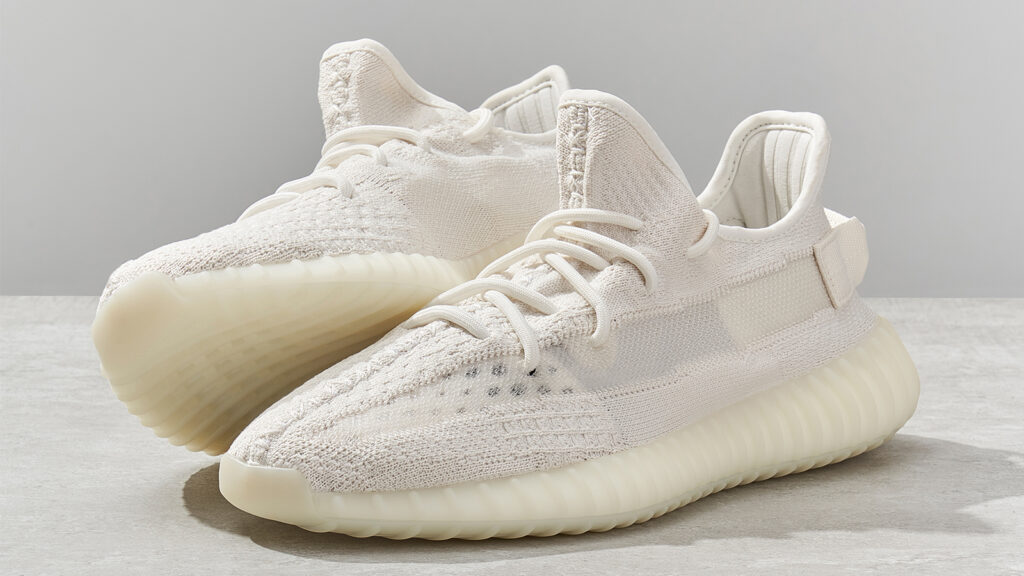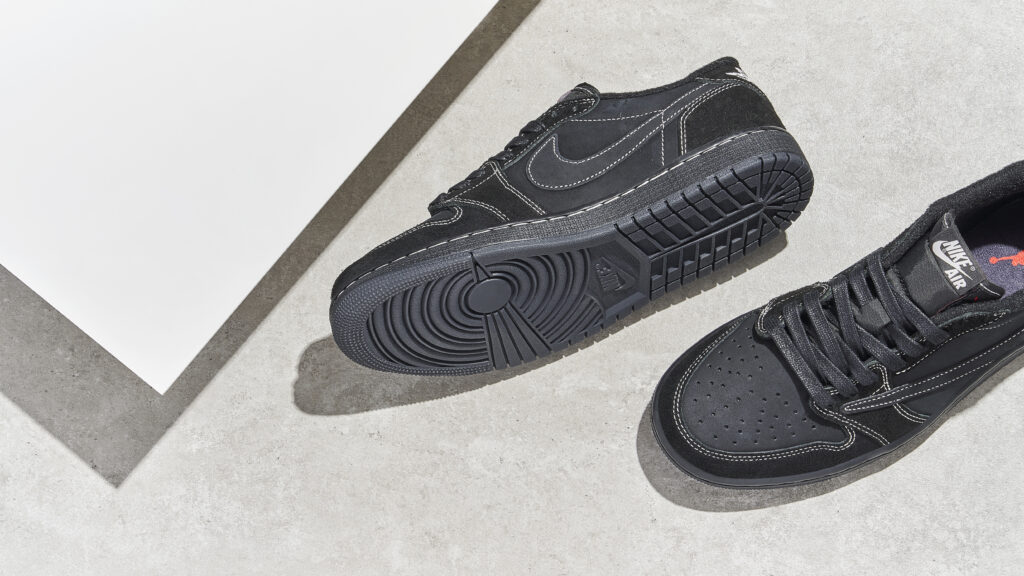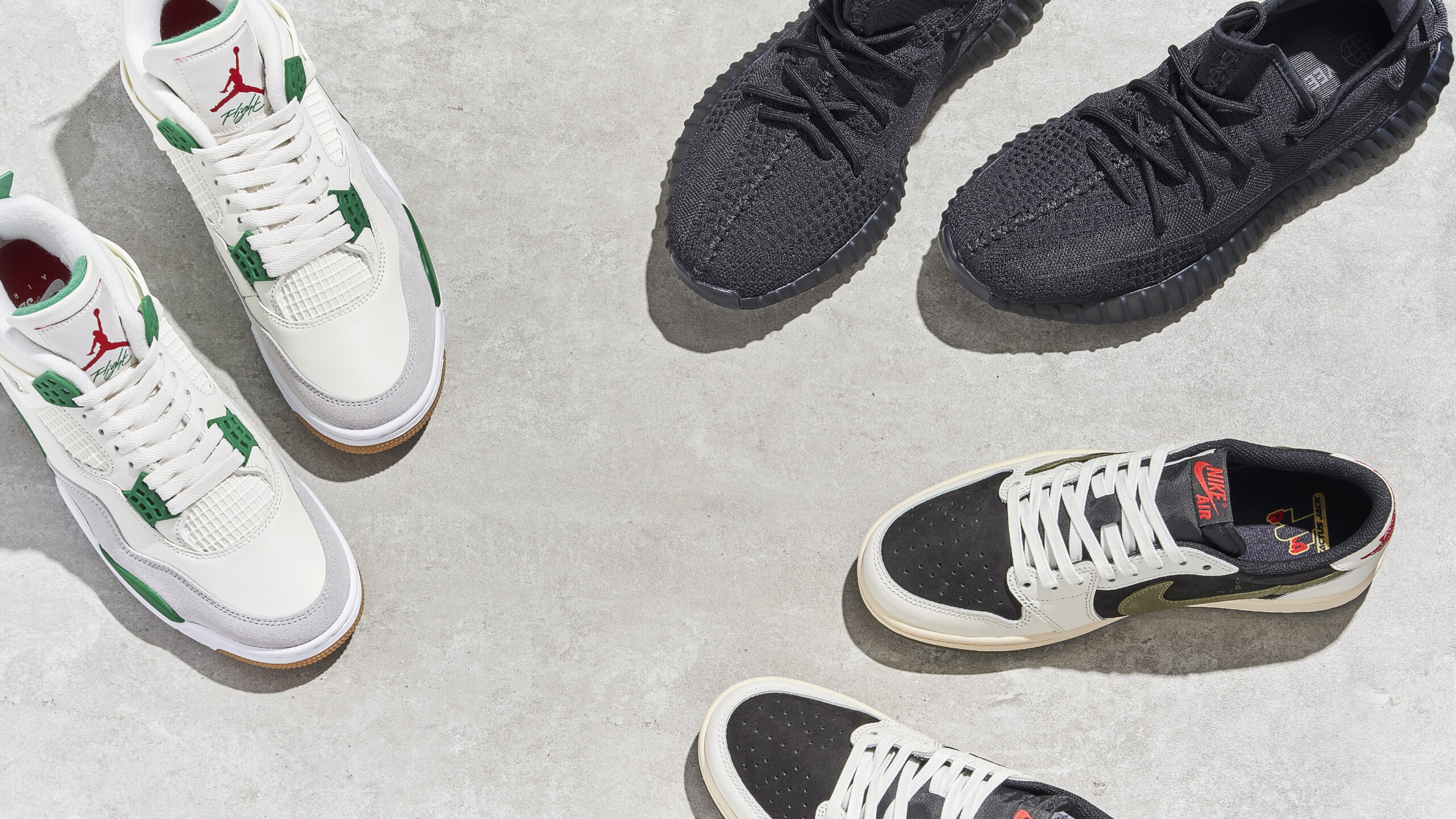Born in the Bronx and enjoyed around the world, hip-hop’s influence is profound, not only shaping music but the way we dress.
From an undiscovered sound permeating through apartment-building parties to selling out arenas around the world, hip-hop won over music aficionados and trainer enthusiasts alike. 50-years on, as sneakers become synonymous with the Bronx-born genre, the trajectory from ‘shell toes’ to Swoosh staples is reflective of the sound’s ascension into the cultural zeitgeist. Dominating fashion trends, thanks to an ever-changing uniform, the creativity of hip-hop artists has effortlessly translated into sneaker design, captivating fans with each release.

The Beginning
1970s New York meant uncertainty for many, fueled by economic collapse. For Mr Clive Campbell, who later became known as DJ Kool Herc and his sister, Cindy, these times provided a fertile environment for a new genre of music.
In 1973 the Campbell siblings held a back to school party in the recreation room of their Bronx apartment building. DJ Kool Herc, began his career at this event using a musical technique inspired by Jamaican selectors, where the same record would be played on two different turntables. Kool Herc would switch between tracks in a technique called the “Merry-Go-Round,” now known as breakbeat, setting the foundations for hip-hop music production.
The Blueprint
Eight years later, Joseph Simmons, Daryl McDaniels, and Jason Mizell, formed Run-D.M.C, dominating hip-hop in the Big Apple and beyond. The trio catapulted the look of the 1970’s b-boy from New York City neighbourhoods into the mainstream.
By pairing adidas shell suits with maximalist gold jewellery and most famously, adidas Superstars, or ‘shell toes’ as they were known at the time with no laces, the rap group helped forge a uniform for the genre in its early days. This look carried negative connotations at the time, with a local doctor, Dr Deas, writing a pamphlet called ‘Felon Shoes’. Deas believed this style was a reflection of criminality, mirroring “how prisons insist inmates wear their shoes”, according to The Face.
Despite the negative associations attributed to the shoe, Run-D.M.C. continued to sport ‘shell toes’, with their signature sportswear-inspired looks, writing the song ‘My adidas’ in an attempt to combat the stigma surrounding the outfit choice. Performing the song to thousands of fans at New York City’s legendary Madison Square Garden as part of the group’s 1986 tour marked a shift in attitudes towards hip-hop artists that would inspire industry partnerships for years to come. As reported by Mr. Porter, “a co-manager for the group, future Def Jam honcho Mr Lyor Cohen, saw the potential to get an endorsement and brought adidas executive Angelo Anastasio to witness a moment when the rappers urged the audience to hold up their sneakers.” This would lead to the hip-hop group earning their Three Stripes in the form of a then unprecedented $1 million deal with the German brand, a catalyst in footwear marketing that would change how the industry operates.
The Uniform
Alongside Superstars, a host of sneakers came to represent the hip-hop style. From NYC to LA, hip-hop began to take off. The Nike Cortez became popular with West Coast rappers, regularly sported by Snoop Dogg and the late Eazy-E, completing the original streetwear uniform. One standout sneaker that has maintained a permanent position in the wardrobes of both rappers and artists is the Nike Air Jordan 1. A symbol of status, thanks to the accolades of the creator, the basketball sneaker’s appeal quickly transcended the court to the streets.
In an interview with Sneaker Freaker, legendary hip-hop photographer Chi Modu recalls the impact of the Air Jordan 1. “I remember when the Jordan 1s came out with the matching sweatsuit because my roommate in college had the full red and black sweatsuit… He was the man on campus for a minute. It was like, ‘Oh, you got the Jordans? Who knew that all these later it would still be here and even more popular.”
The Air Jordan has been a mainstay in hip-hop since its inception, with various models worn by rap music legends. Notably, the Air Jordan was favoured by early stars, such as LL Cool J, who wore the Air Jordan 1 on the cover of his debut album, ‘Radio’. The Air Jordan has been a favourite of rappers ever since, with modern artists such as Travis Scott releasing several sought-after iterations of the design. Compton rapper Kendrick Lamar paid homage to the West Coast roots of the Nike Cortez with his signature take on the iconic sneaker.

The Start of Something Bigger
As the music started to evolve, so did sneakers. In 2002, Nelly released ‘Air Force Ones’, a track dedicated to the Nike classic that received its all-white debut in the 1990s. In the music video for the noughties rap anthem, Nelly can be seen surrounded by Nike’s Iconic red shoe boxes as he declares his love for the silhouette.
In the same year, legendary hip-hop artist Jay-Z was granted a sneaker deal with Reebok, setting a precedent in the industry for trainer companies collaborating with rappers. Jay Z’s signature trainer was a part of the RBK line, mirroring the look of the Gucci Tennis 84, an iconic silhouette honouring the early days of hustler culture. These sold out fast, encouraging Reebok to sign several other artists, including Pharrell Williams and Nelly. Unfortunately, the brand could not capitalise off its new deals, eventually ending its RBK line.
The Kanye Effect
Throughout the 2000s, rapper Kanye West had several collaborative stints with brands, including Louis Vuitton and Bape, before securing creative partnerships with the world’s biggest sneaker manufacturers.
In 2008 West took to the stage to receive the Grammy Award for ‘Best Rap Album’. Eagle-eyed fans of the ‘College Dropout’ musician, who had just released his fourth album, noticed an unknown Nike high-top on his feet. The was identified as the Nike Air Yeezy, which received a general release in 2009, quickly finding its way to resale sites after the drop. West treated fans to a second Nike release in 2012, which would be his last following a fallout over royalties on his designs with the Swoosh brand.

In 2015 Ye embarked on a new collaborative venture with adidas, which would produce popular silhouettes such as the Yeezy 750, Yeezy 350 and Yeezy Slide. While not the first rapper to get a shoe deal, West’s partnerships with adidas and Nike marked a shift in the industry, where rappers overtook athletes as cultural tastemakers in fashion and footwear, creating a new type of sneakerhead and altering pop culture.
Kanye’s partnership with adidas ended in October 2022, but the German footwear manufacturer has agreed to sell off the remaining stock to avoid sustainability issues. However, no further Yeezy products will be produced with the Three Stripes brand.
50 Years On
As we celebrate the 50th anniversary of hip-hop, its influence on how we dress is only increasing, with co-signs and collaborations with rappers bringing exciting energy to the sneaker market. Following the blueprint left by Kanye West, Run-D.M.C., and many more, casual footwear remains an important part of the hip-hop uniform.
Houston-born rapper Travis Scott brought his brand of trap and psychedelia-infused hip-hop to the airwaves, earning him several accolades, including a Nike sneaker deal. Before officially collaborating with Nike, the rapper was regularly spotted donning Swoosh silhouettes. First partnering with the brand in 2018, the artist has worked on several styles, from the more experimental Air Jordan 33 to the Air Max 1 and Air Max 270. However, Scott’s inverted Swoosh Air Jordan 1s have generated the most demand in recent years.

Other rappers have also been granted access to Nike’s roster of hip-hop-approved sneakers. Drake is best known for his unique fusion of hyper-real lyrics with a danceable tempo. In 2020, the multifaceted artist launched Nocta, a joint venture with Nike, responsible for collaborative takes on the Nike Air Force 1 and a 2000s-inspired Nike Air Terra, building on the foundations set by earlier artists.
As hip-hop has progressed from the Bronx to The BRITs, its impact on fashion has shifted the cultural discourse and direction of fashion trends. Dominating the zeitgeist of recent years, rappers have overtaken athletes, becoming the driving force behind the most sought-after sneaker releases.
